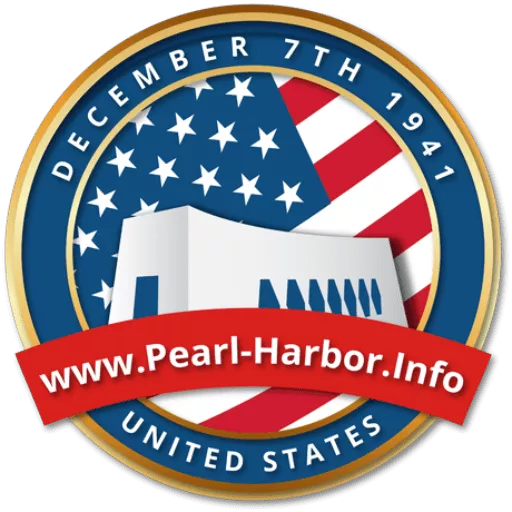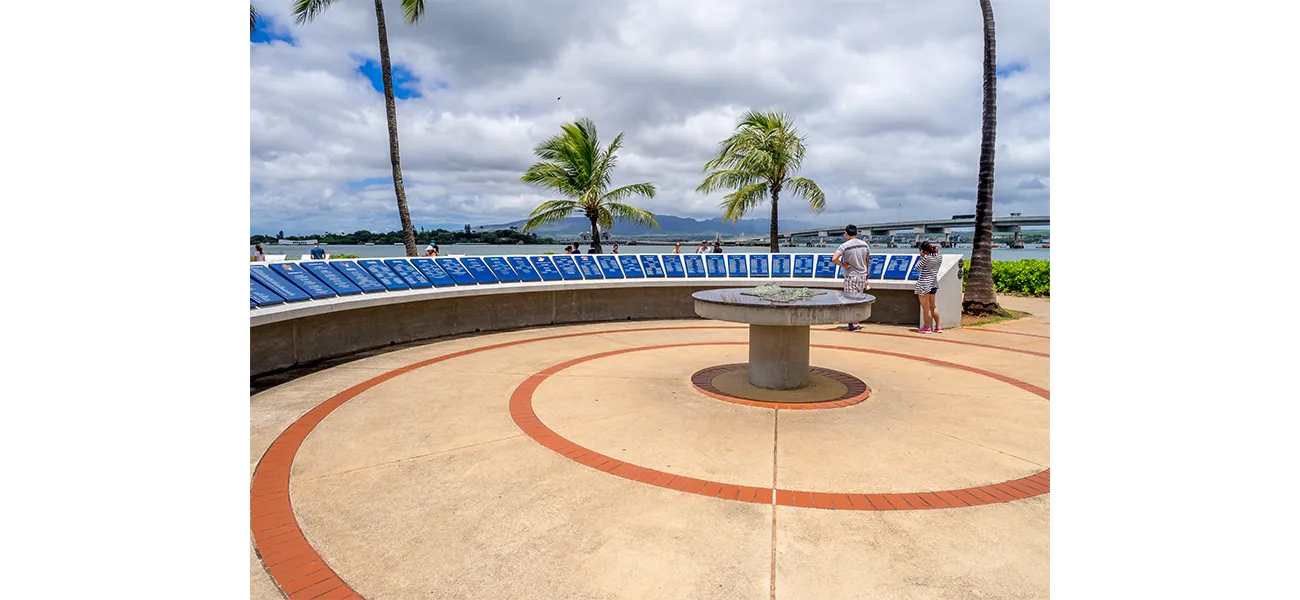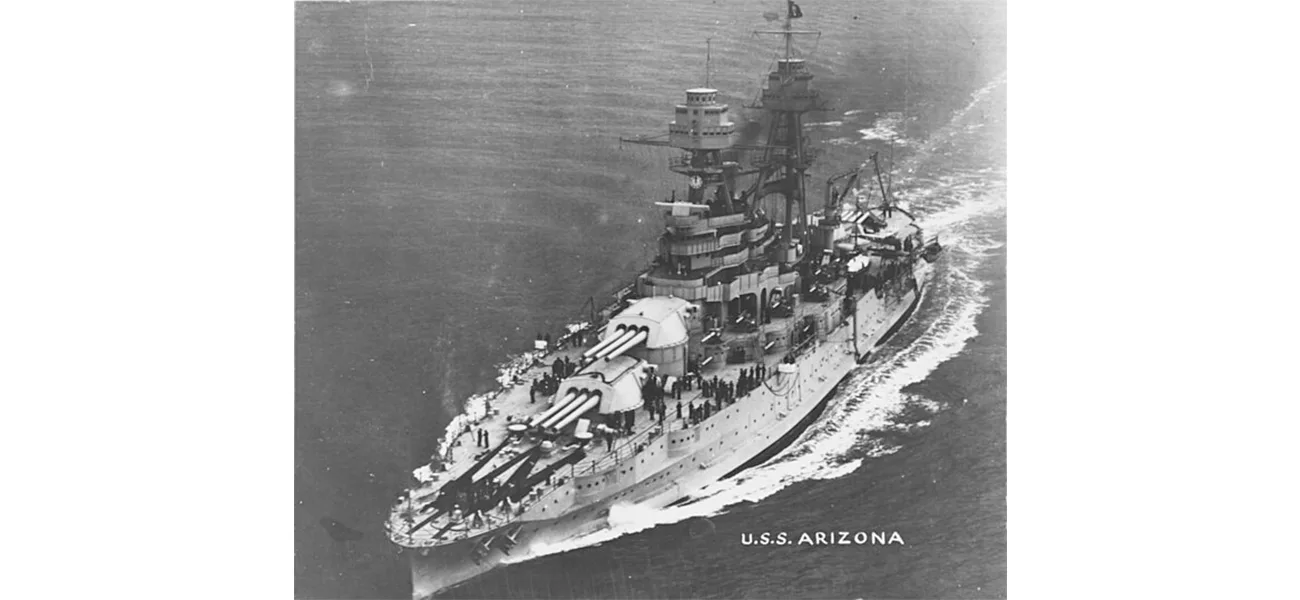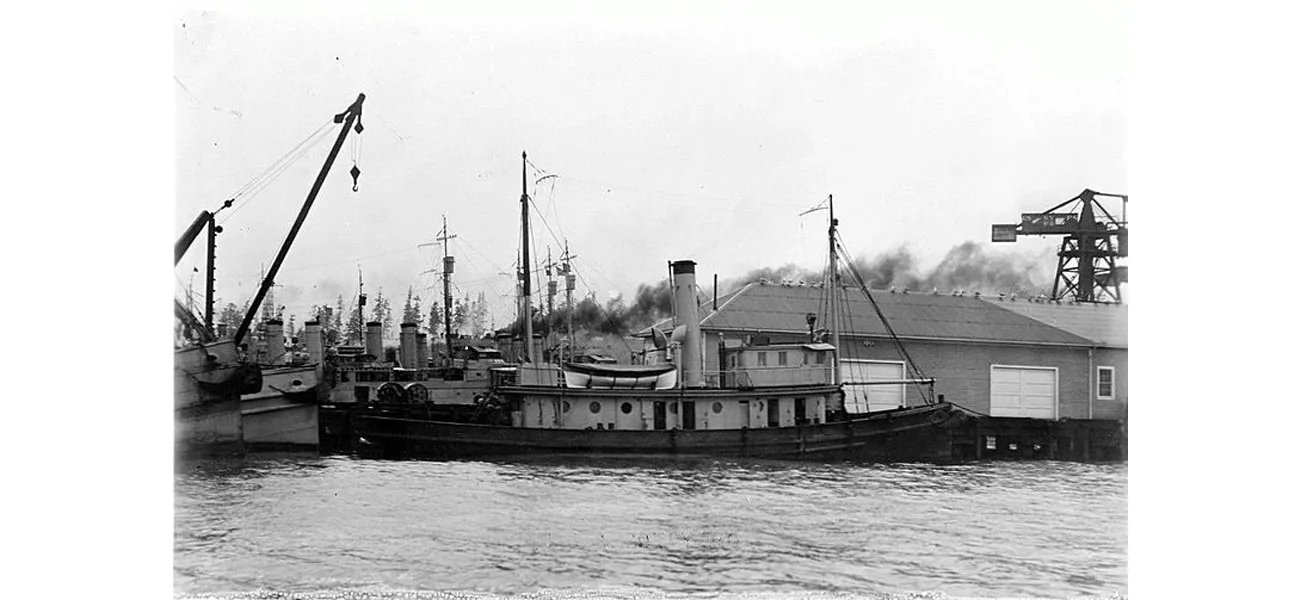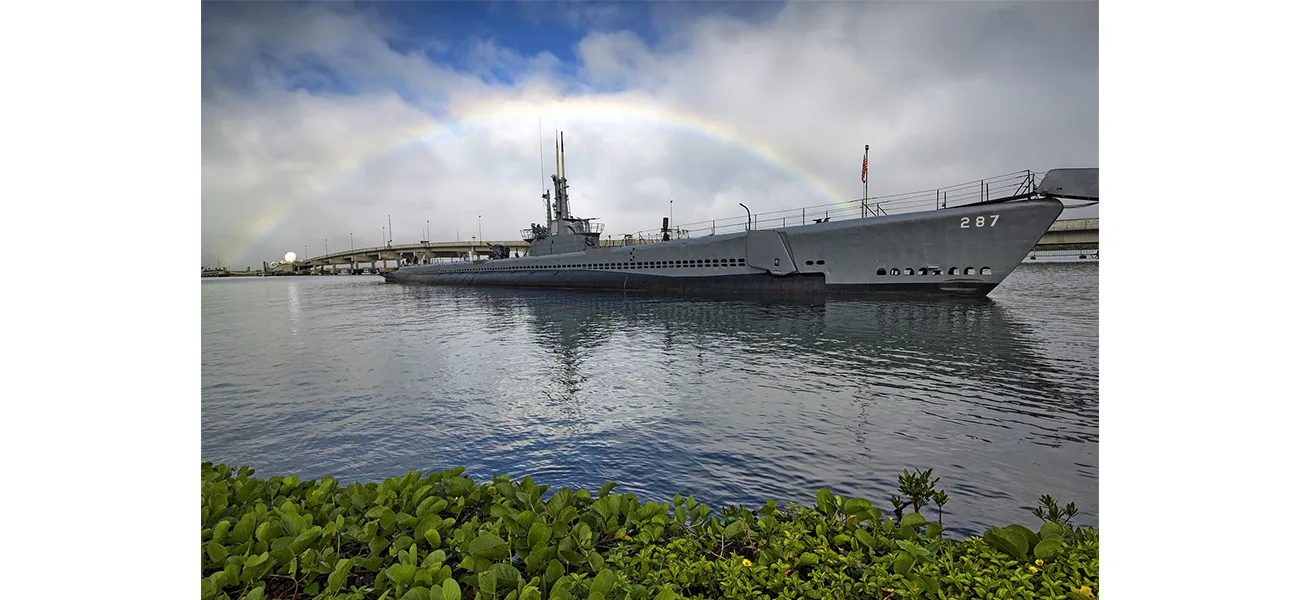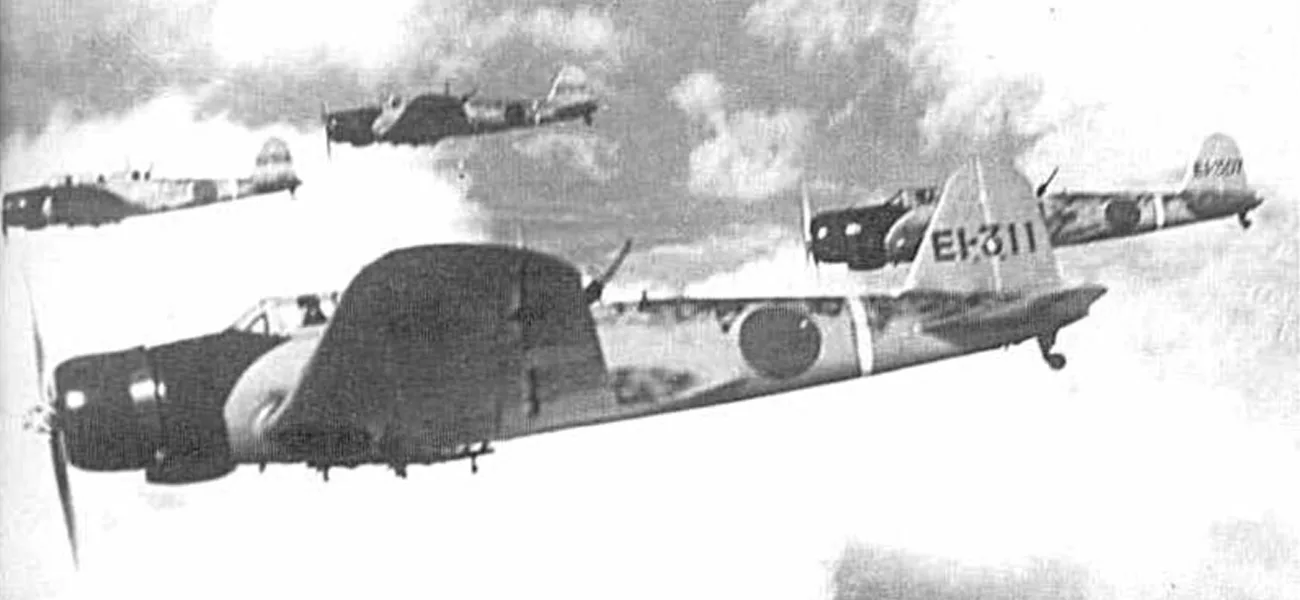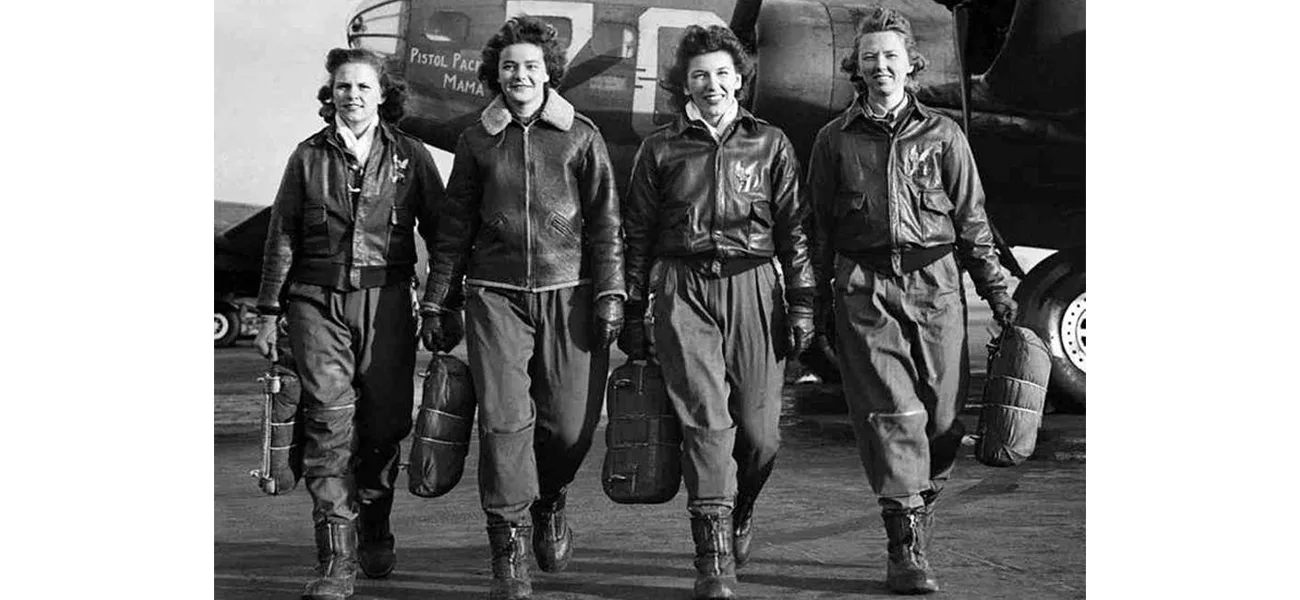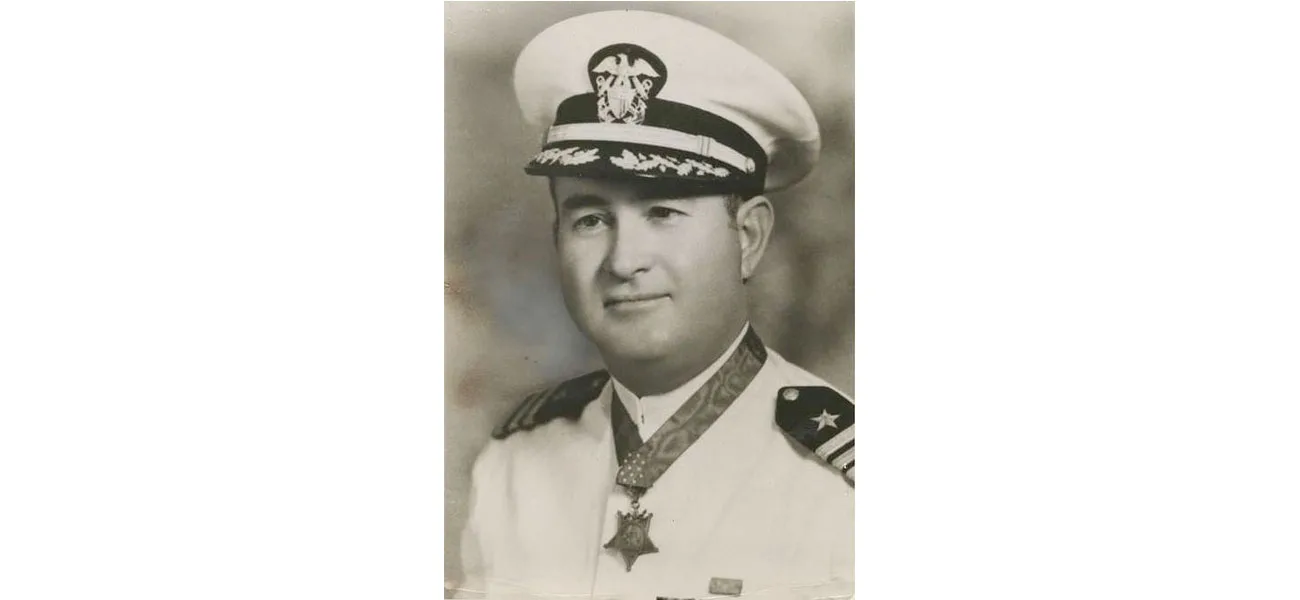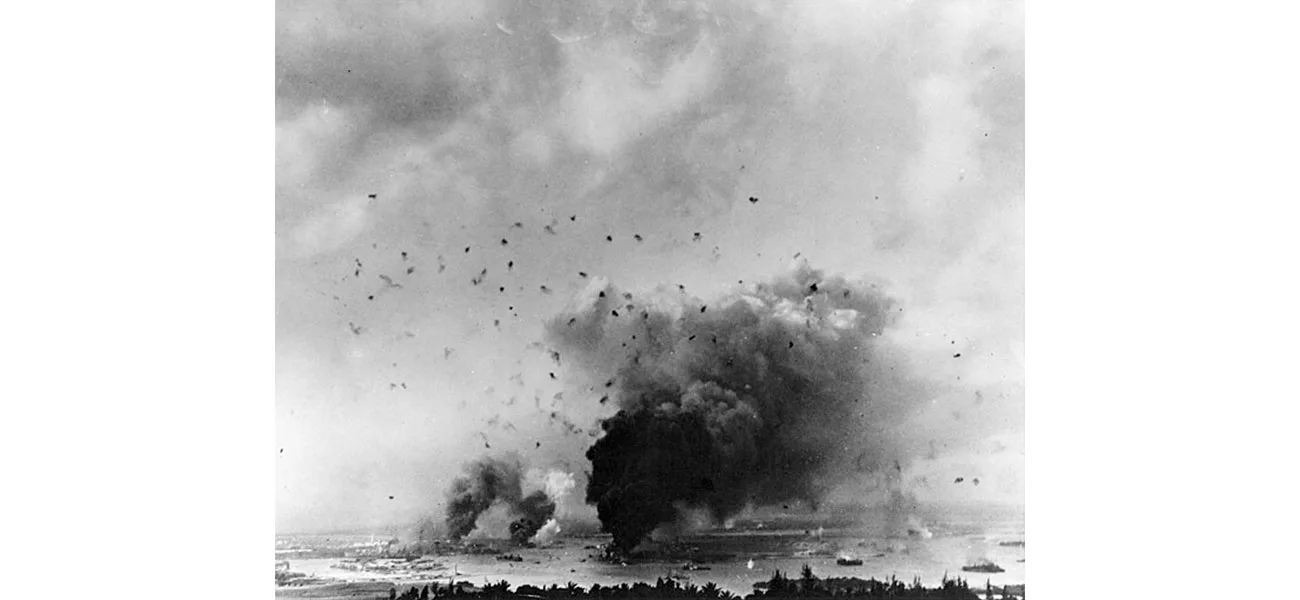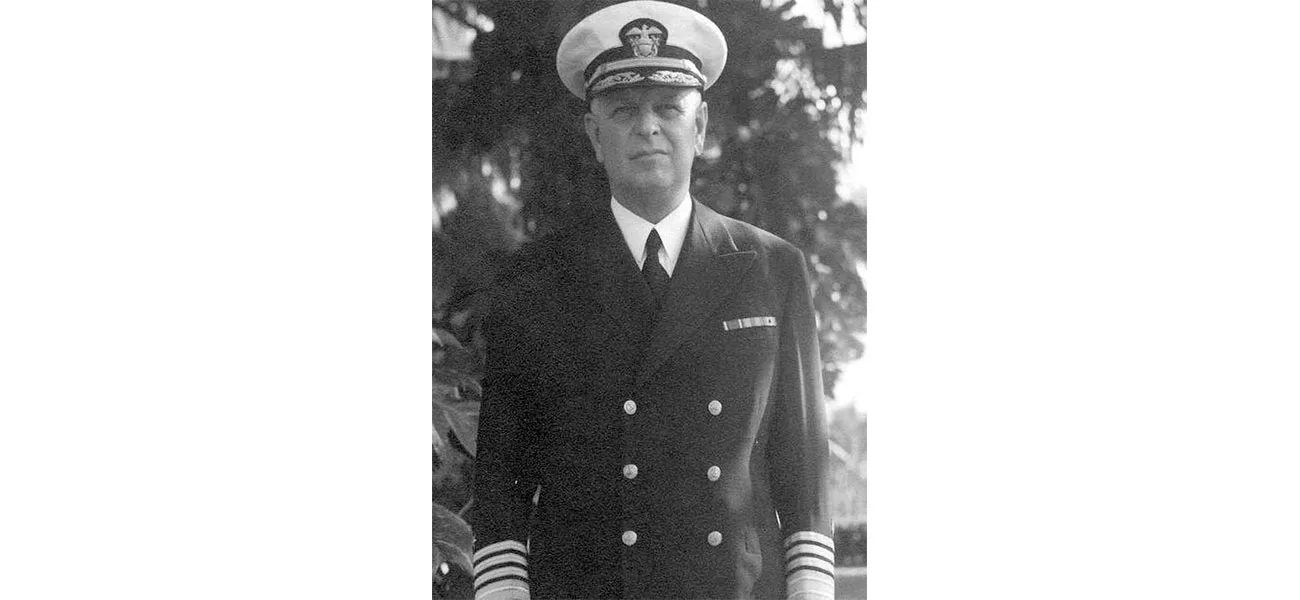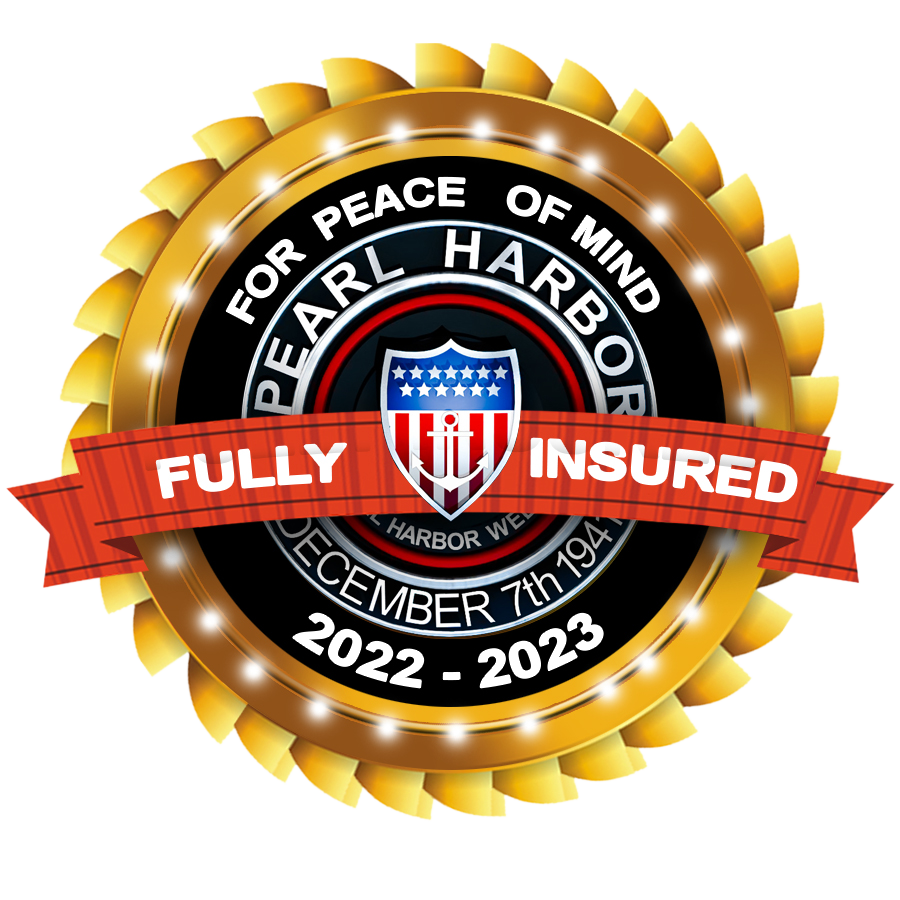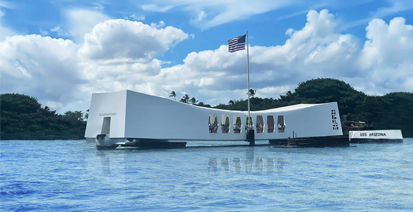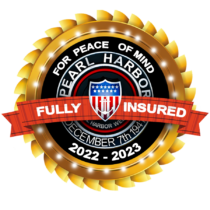What Is the Pearl Harbor Remembrance Circle?
The Pearl Harbor Remembrance Circle is a circular structure made of concrete, surrounding a pedestal that displays a topographical map of Oahu. Markers on the map pinpoint the locations around the island that were attacked on December 7th, 1941, including Pearl Harbor itself, Hickam Field, and Naval Air Station Kaneohe Bay. Facing the USS Arizona Memorial, you’ll find a semi-circular wall engraved with plaques listing all 2,403 American lives lost that day, both military personnel and civilians. These names are grouped by their stations, offering a way to visualize the widespread impact of the attack. The Remembrance Circle’s design provides a clear view of Ford Island, the USS Arizona Memorial, and the Battleship Missouri, creating a space for reflection amidst the historic surroundings.
The Pearl Harbor Remembrance Circle was established to provide a dedicated space for reflection and remembrance of the attack. It was created through the collaborative efforts of several organizations, including the National Park Service and the Pearl Harbor Survivors Association. The circle stands as a testament to the enduring legacy of those who fought and died on that fateful day.
Annual Remembrance Events on Pearl Harbor Remembrance Circle
Every year on December 7th, a solemn ceremony is held at the Pearl Harbor Remembrance Circle to honor the anniversary of the attack. These events often include speeches from survivors, military flyovers, and the laying of wreaths. Past ceremonies have seen participation from dignitaries and veterans, making them a significant occasion for reflection and unity.
Today, the Pearl Harbor Remembrance Circle continues to play a crucial role in preserving the memory of the attack. It serves as a place for contemplation, education, and community gathering. Its contemporary relevance lies in its ability to remind us of the past while inspiring a commitment to peace and understanding.
Global Recognition
The significance of the Pearl Harbor Remembrance Circle extends beyond American borders. International visitors come to pay their respects, and the site is recognized globally as a symbol of the devastating effects of conflict and the enduring hope for peace.
The Pearl Harbor Remembrance Circle stands as a powerful tribute to the lives lost on December 7, 1941. It is a place of reflection, education, and unity, ensuring that the memories of those who sacrificed are kept alive for future generations. If you have the opportunity, visiting this memorial can provide a profound connection to a pivotal moment in history.
